- The mission of Cosumnes River College is to provide opportunities for individuals to achieve their maximum potential and contribute to the well being of the larger community.
School Highlights
Cosumnes River College serves 20,690 students (17% of students are full-time).
The college's student:teacher ratio of 42:1 is higher than the state community college average of 32:1.
Minority enrollment is 76% of the student body (majority Hispanic and Asian), which is less than the state average of 77%.
Quick Stats (2025)
- Enrollment: 20,690 students
- In-state tuition: $1,104
- Out-state tuition: $7,200
- Student:teacher ratio: 42:1
- Minority enrollment: 76%
- Source: Integrated Postsecondary Education Data System (IPEDS)
Top Rankings
Cosumnes River College ranks among the top 20% of public schools in California for:
School Overview
The teacher population of 491 teachers has stayed relatively flat over five years.
Cosumnes River College
(CA) Community College Avg.
Carnegie Classification
Associate's Colleges: Mixed Transfer/Career & Technical-Mixed Traditional/Nontraditional
Baccalaureate/Associate's Colleges: Associate's Dominant
Institution Level
At least 2 but less than 4 years
At least 2 but less than 4 years
Institution Control
Public
Public
Total Faculty
491 staff
294 staff
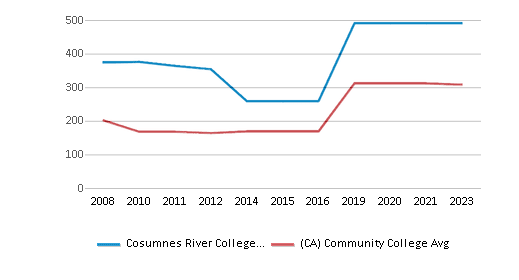
School Calendar
Student Body
The student population of Cosumnes River College has grown by 43% over five years.
The student:teacher ratio of 42:1 has increased from 30:1 over five years.
The Cosumnes River College diversity score of 0.79 is more than the state average of 0.70. The school's diversity has stayed relatively flat over five years.
Total Enrollment
20,690 students
2,311 students
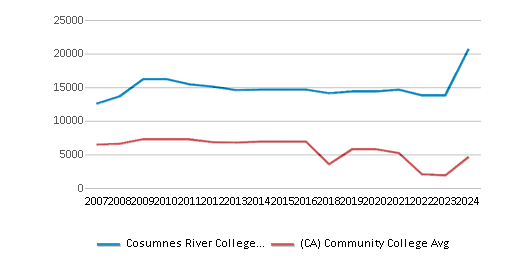
Student : Teacher Ratio
42:1
32:1
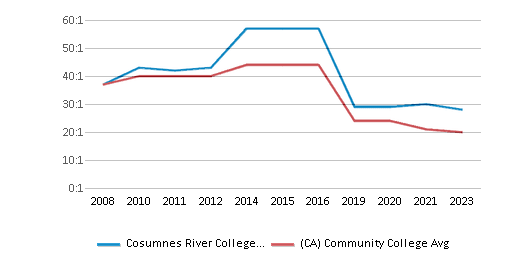
# Full-Time Students
3,490 students
1,232 students
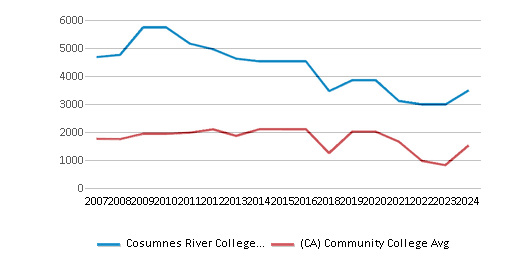
# Part-Time Students
17,200 students
8,299 students
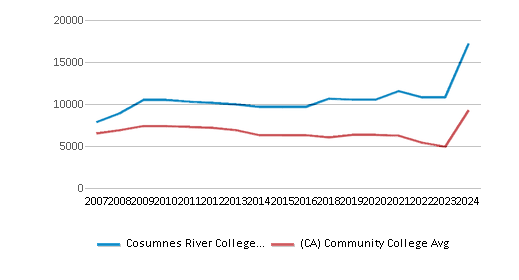
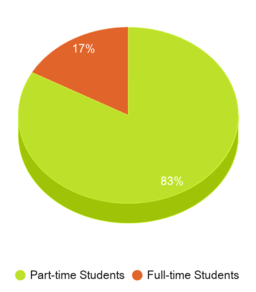
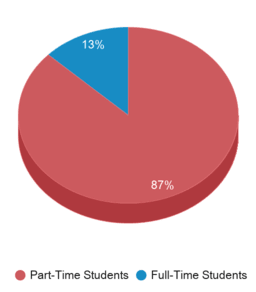
# Enrollment Undergraduate
206 students
240 students
# Full-Time Undergraduate Students
3,490 students
1,155 students
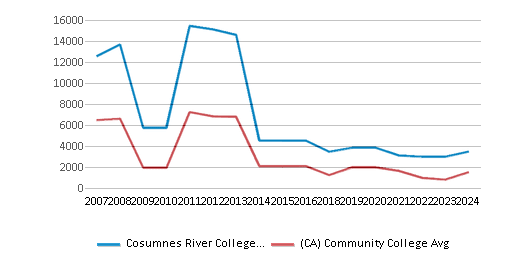
# Full-Time Graduate Students
n/a
63 students
# Part-Time Undergraduate Students
17,200 students
8,457 students
# Part-Time Graduate Students
n/a
10 students
Total Dormitory Capacity
n/a
140 students
% American Indian/Alaskan
n/a
n/a
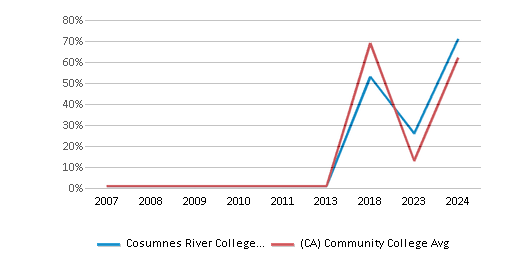
% Asian
24%
13%
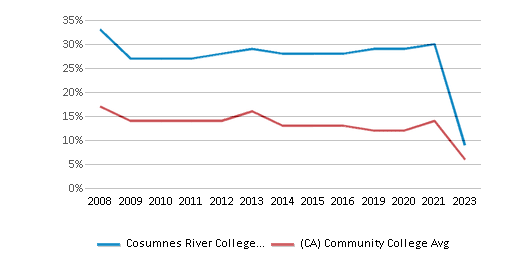
% Hispanic
28%
47%
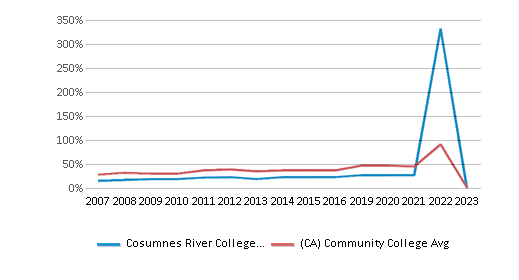
% Black
9%
7%
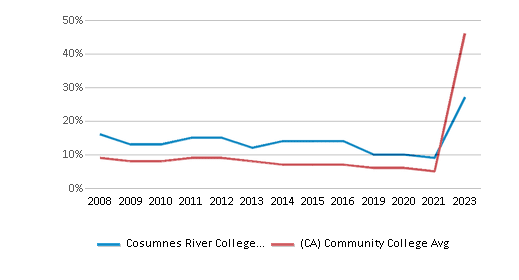
% White
24%
23%
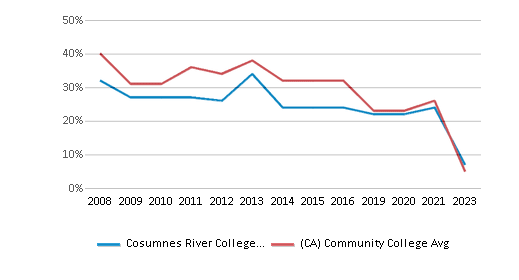
% Hawaiian
1%
1%
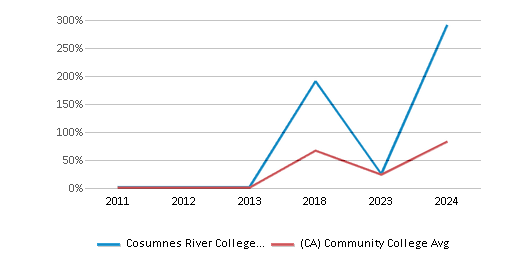
% Two or more races
6%
5%
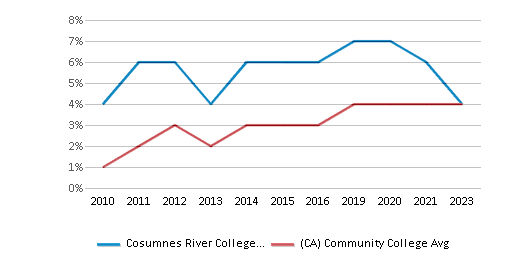
% Non Resident races
n/a
1%
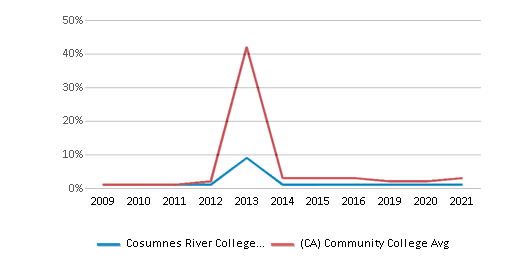
% Unknown races
7%
3%

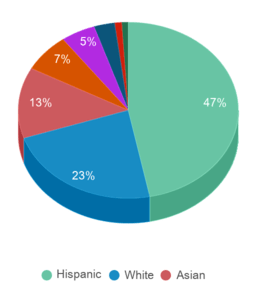
Diversity Score
0.79
0.70
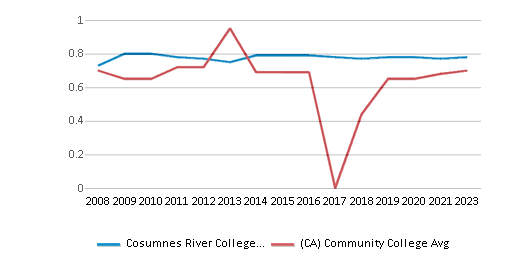
College Completion Rate (Students who graduate in less than 4 years)
0.3125%
0.4221%
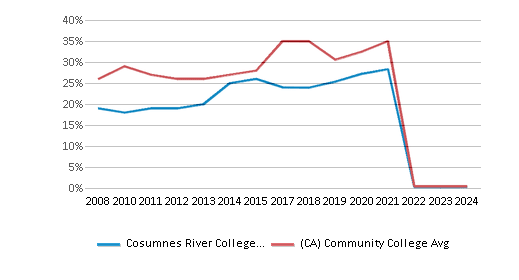
College Completion Rate (Students who graduate in 4 years or more than 4 years)
n/a
0.4304%
Average Graduate Earnings (10 Years)
$32,100
$34,700
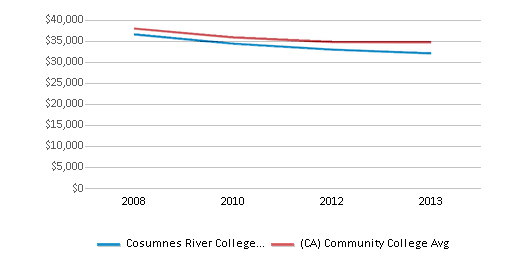
Tuition and Acceptance Rate
The public in-state tuition of $1,104 is less than the state average of $1,236. The in-state tuition has declined by 14% over four years.
The public out-state tuition of $7,200 is more than the state average of $6,547. The out-state tuition has declined by 26% over four years.
In-State Tuition Fees
$1,104
$1,236

Out-State Tuition Fees
$7,200
$6,547
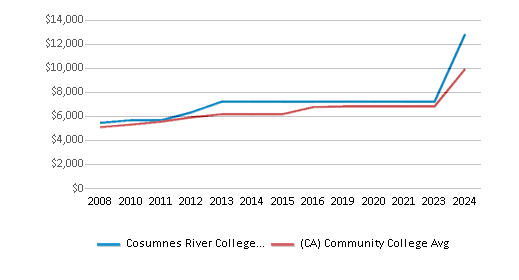
% Students Receiving Some Financial Aid
94%
85%
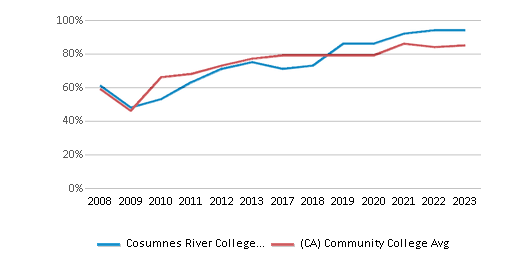
Median Debt for Graduates
$10,000
$10,500
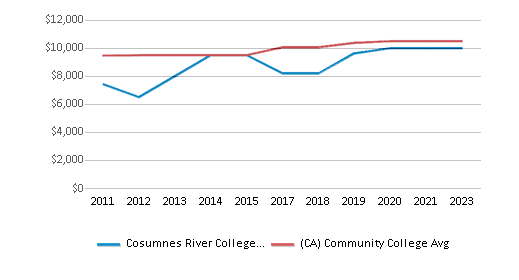
Median Debt for Dropouts
$8,020
$6,239
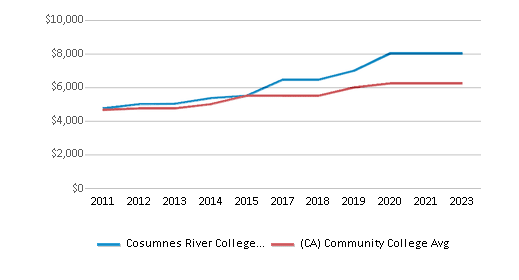
Acceptance Rate
n/a
92%
Sports
Total Sports Offered
6 sports
Sports
Baseball, Soccer, Softball, Swimming, Tennis, Volleyball
Source: 2024 (or latest year available) Integrated Postsecondary Education Data System (IPEDS) , School Administrators
School Notes
- Cosumnes River College is one of four community colleges within the Los Rios Community College District. The college opened on September 14, 1970, with 1,800 day and 350 evening students. Facilities included the science building, automotive and technology complex, women's physical education building, pool, and the library building. In September 1975, the Business/Social Science classroom building was dedicated, the first since the college opened. The computer laboratory, located there, is equipped with state-of-the-art data processing equipment that supports many areas of the college curriculum. There are more than 14,000 students enrolled at Cosumnes River College. The college offers a broad option of more than 60 occupational degree programs, and a comprehensive curriculum of transfer courses. Cosumnes River College provides an inclusive learning environment and creates dynamic opportunities for the intellectual growth of students, staff and our community.
Frequently Asked Questions
How much does Cosumnes River College cost?
Cosumnes River College's tuition is approximately $1,104 for In-State students and $7,200 for Out-State students.
What schools are Cosumnes River College often compared to?
Cosumnes River Collegeis often viewed alongside schools like American River College, Sacramento City College by visitors of our site.
What sports does Cosumnes River College offer?
Cosumnes River College offers 6 interscholastic sports: Baseball, Soccer, Softball, Swimming, Tennis and Volleyball.
What is Cosumnes River College's ranking?
Cosumnes River College ranks among the top 20% of community college in California for: Diversity in US community colleges and Largest student body.
In what neighborhood is Cosumnes River College located?
Cosumnes River College is located in the Valley Hi And North Laguna neighborhood of Sacramento, CA.
Recent Articles

Obtaining Your Bachelor's Degree at a Community College
Explore the evolving landscape of community colleges offering bachelor's degrees, addressing affordability, accessibility, and workforce needs.

A to Z of Community College Certificates and Courses
From business and healthcare to technology and skilled trades, the article showcases the breadth of options available to students seeking to enhance their knowledge, develop new skills, or pursue career advancement.

What is a Community College?
This comprehensive guide explains what a community college is, its history, and its role in higher education. It covers the types of programs offered, differences from four-year colleges, benefits of attending, and important considerations for prospective students, providing valuable insights for those exploring educational options.









